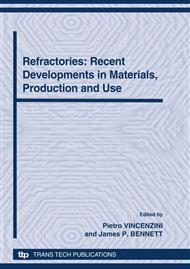p.1
p.9
p.15
p.21
p.30
p.37
p.47
The Federation for International Refractories Research and Education (FIRE): Progress and Outcome on Education, Research and Industrial Partnership
Abstract:
FIRE has been incorporated as a non-profit organization in Canada, in May 2005. It is by now a network of professors, researchers and industrial partners, representing eight different universities spread in six different nations and eleven multinational companies, who have gathered, to undertake well-defined precompetitive research projects, and to train highly-qualified personnel for the industry. The evolution of the refractory education arena, in an economically globalized world, caught in a maelstrom of technical changes, is presented. The changes of paradigm from the “information age society” to the “crowdsourcing” in background, the FIRE realization are highlighted in such a context of “conceptual age society” are considered, with the concept of “coopetition”.
Info:
Periodical:
Pages:
1-8
Citation:
Online since:
October 2010
Authors:
Keywords:
Permissions:
Share:
Citation:


